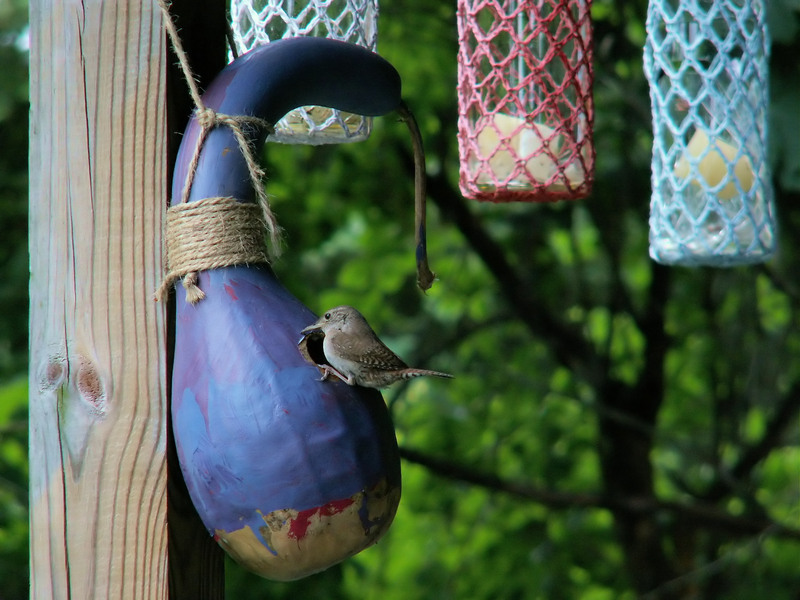Ongoing Clutter Management: Tips and Tricks
Clutter can sneak up on anyone, steadily accumulating until your living or work space feels chaotic and overwhelming. For many people, the challenge isn't a one-time cleanup, but how to manage clutter on an ongoing basis. Whether at home, your workspace, or even digitally, consistent clutter control can truly transform your daily life. This comprehensive guide will provide actionable, practical tips and tricks for ongoing clutter management--helping you create calming, organized environments that boost productivity and wellness.
Why Ongoing Clutter Management is Crucial
Before we delve into the best clutter management strategies, it's important to understand why ongoing clutter control is so essential. Clutter doesn't just impact aesthetics--it affects mood, focus, and even health. Studies have shown that excessive visual or physical clutter increases stress levels, reduces efficiency, and can negatively affect relationships.
By implementing a system for ongoing organization, you're setting up your environment for sustained success, rather than needing to frequently undertake massive clean-up projects.
- Mental clarity: Keeping clutter at bay helps clear your mind and reduce anxiety.
- Productivity: An organized space is more efficient, enabling faster work and less wasted time.
- Health and safety: Less clutter translates to fewer allergens, dust, and tripping hazards.

Understanding the Types of Clutter
Part of ongoing clutter management is recognizing the different kinds of clutter you may encounter:
- Physical clutter: Items in your home, office, or car that no longer serve a purpose, such as old magazines, boxes, clothing, or unused kitchen gadgets.
- Digital clutter: Disorganized files, overflowing inboxes, and unwanted desktop icons.
- Mental clutter: Clutter manifests as tasks, ideas, or worries crowding your mind.
Ongoing Clutter Management Tips You Can Use
Let's dive into actionable and sustainable clutter control tips that can transform your environment for the long-term:
1. Adopt a "One In, One Out" Rule
Whenever you bring something new into your space, remove a similar item. This simple but powerful principle prevents accumulation, keeping your inventory steady and manageable.
- When you purchase a new shirt, donate or recycle an old one.
- If you receive a new book, pass an old one onto a friend.
2. Declutter in Small, Regular Bursts
Instead of marathon clean-ups that can be exhausting, set aside 10-15 minutes every day or a few times a week to tackle clutter. This could be as easy as:
- Sorting through one drawer
- Clearing the kitchen counter every evening
- Unsubscribing from unwanted emails for 10 minutes
3. Utilize Effective Storage Solutions
Invest in bins, shelving, drawer dividers, and other organization tools tailored to your needs. Assign designated places for categories of items--when everything has a home, clutter has nowhere to hide.
- Use clear containers so you can see contents at a glance.
- Label boxes, baskets, and drawers for quick identification.
- Maximize vertical space with wall-mounted shelves or pegboards.
4. The Power of Routine
Establish daily or weekly routines that embed ongoing clutter management into your lifestyle:
- Empty inboxes every Friday.
- Sort mail as soon as it arrives--recycle junk immediately.
- Do a 5-minute tidy before bed.
5. Digitize Whenever Possible
Reduce physical clutter by transitioning paper documents, receipts, and even photos to digital storage. Make sure to:
- Back up files regularly--preferably to multiple locations (like cloud and an external drive).
- Organize digital folders with clear naming conventions.
- Regularly clean out downloads and desktop folders.
6. Practice Mindful Acquisition
The most effective way to maintain a clutter-free environment is to be intentional with what you bring in. Pause before every purchase and ask:
- Do I truly need this item?
- Do I have a place for it?
- Will it add value to my space or lifestyle?
7. Review and Refresh Regularly
Designate specific times during the year (such as the start of each season) to review belongings. During these "refresh" sessions:
- Reassess items you're storing--are you still using them?
- Donate or recycle unused goods.
- Adjust organizational systems as your needs change.
8. Involve the Household
Clutter is often a group affair! Get family or roommates involved by:
- Assigning age-appropriate decluttering tasks to children.
- Discussing and establishing shared organization standards.
- Setting up communal drop zones for shared items.
9. Create a Clutter Management System for Specific Zones
Break down your home or office into distinct"clutter zones" and assign specific systems for each:
- Entryway: Install hooks for bags and keys, trays for mail, and a shoe rack.
- Kitchen: Use drawer dividers and clear out expired pantry goods monthly.
- Bathroom: Keep only daily-use items on counters; store extras in labeled bins.
- Workspace: Have designated files for paperwork and limit desktop items to essentials.
10. Address Sentimental Clutter Compassionately
Items with emotional value can be the trickiest to manage. Try these tips for sentimental clutter management:
- Limit keepsakes to a defined space--such as one box per person.
- Photograph items you want to remember but don't need to keep physically.
- Display a small selection of cherished mementoes, and store the rest.
Overcoming Roadblocks in Ongoing Clutter Management
Even with the best tools and intentions, maintaining ongoing clutter control can face obstacles. Here's how to conquer common challenges:
Procrastination
Divide tasks into micro-steps. Set a timer for 5-10 minutes and focus only on one small area. Action breeds momentum.
Emotional Attachment
Ask yourself if keeping the item serves your present life or encumbers it. It's okay to let go--your memories aren't in the objects themselves.
Time Constraints
Integrate organizing tasks into daily routines (like sorting mail while unpacking groceries), or schedule small, regular decluttering appointments just like meetings.
Key Benefits of Ongoing Clutter Management
- Enhanced home aesthetics: Tidy spaces feel inviting and tranquil
- Improved focus: Fewer distractions let your mind rest and create more freely
- Less cleaning time: Cleaning and tidying become easier when clutter is controlled
- Financial savings: Knowing what you have curbs unnecessary purchases
- Positive mental health: A serene environment promotes wellbeing
Common Mistakes to Avoid in Clutter Management
- Waiting for a "perfect time" to declutter
- Trying to do everything all at once
- Not establishing maintenance routines
- Forgetting to involve others who share your space
- Storing items instead of truly letting go
Digital Clutter: An Often Overlooked Aspect
Just like physical spaces, your digital life needs consistent organizing. Here are ongoing digital clutter control strategies:
- Organize email with folders, filters, and regular reviews
- Delete or archive old files you no longer need
- Uninstall unused apps and programs
- Use password managers and backup tools for security and efficiency
How to Make Ongoing Organization Easy and Fun
Turning ongoing clutter management into an enjoyable habit:
- Play music or a podcast while tidying
- Set challenges for yourself--like seeing how fast you can clear a particular spot
- Reward yourself when you achieve milestone goals
- Use visually appealing storage that matches your decor
Ongoing Clutter Management For Families With Children
Kids can create a unique form of clutter. Teach organization early by:
- Using low shelves and bins children can access themselves
- Labeling with pictures for pre-readers
- Making cleanup a game or part of the routine
- Modeling good organizing behavior

Refreshing Your Commitment to Clutter Management
Even those most dedicated to orderly spaces can fall off track. Recommit to ongoing clutter management by:
- Setting new goals for spaces you want to improve
- Enlisting a friend for encouragement or accountability
- Tracking your progress with before-and-after photos
Conclusion: Invest in Ongoing Clutter Control for a Better Life
Establishing ongoing clutter management habits is one of the greatest gifts you can give yourself and those you live or work with. By making small, consistent changes and staying mindful about what enters your space, you turn chaos into calm and stress into satisfaction.
Remember, ongoing organization is a journey. There will be setbacks, but each step you take toward managing clutter brings you closer to tranquility and control. Start today, and enjoy the freedom and clarity that only a clutter-free environment can offer!